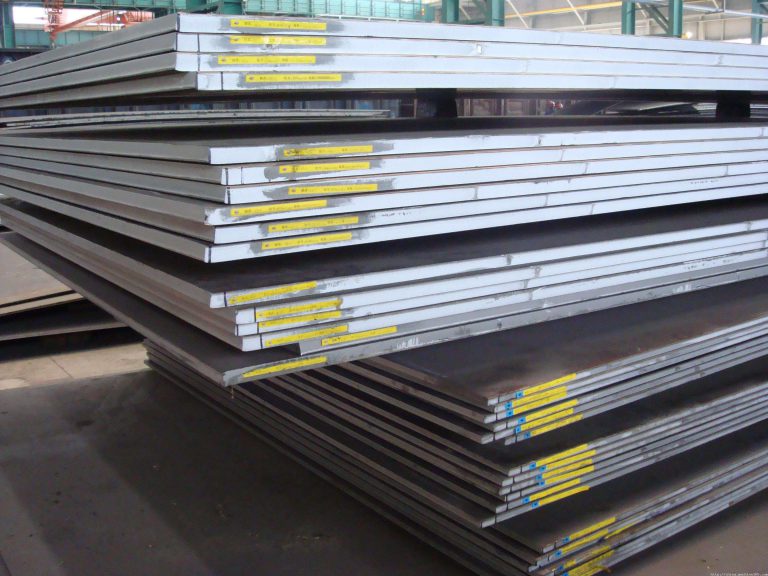asme sa 516 gr 70 mechanical properties
SA516Gr.70 is widely used in petroleum, chemical, power station, boiler, and other industries used to make reactors, heat exchangers, separators, spherical tanks, gas tanks, liquefied gas tanks, nuclear reactor pressure shells, boiler drums, liquefied petroleum
Equipment and components such as gas cylinders, high-pressure water pipes of hydropower stations, and turbine volutes.
A516Gr70N meets the requirements of (ASME) ASTMA516/A516M standards, and fully meets the needs of oil gas with a high content of sulfur and hydrogen, reduces sulfur and hydrogen corrosion, reduces equipment maintenance, and increases equipment service life.
The steel plate has the following characteristics: good impact resistance, low-temperature deformation, good welding performance, good fatigue resistance, good anti-layer cracking performance, microalloying, high purity, low carbon equivalent, strong resistance to sulfur and hydrogen,
The products have good dimensional tolerances and surface quality.
We are ASME SA516 Gr.70 and ASME SA516GR.70 steel plate manufacturers,SA516GR.70 stocklist, SA516GR.70 cutting parts, SA 516 GR 70 machined parts supplier. Gangsteel exporter ASME SA516 Grade 70|ASME SA516GR.70 steel plate. SA516GR70 is a carbon pressure vessel steel grade. ASME SA516 GR.70 steel plates stock supplier.Keywords: ASME A516 Grade 70, ASME A516GR.70, ASME A516GR70, ASME A516 GR.70 SA516 Grade 70 steel is a carbon pressure vessel steel grade for moderate and lower temperature service.
SA516 Grade 70 usual request normalized if thickness above 40mm, if not, Gangsteel usual delivery in hot rolled or control rolled station. A516 Gr.70+N or A516gr70N mean that steel grade must be normalized in any thickness.

Heat treatment
1.·SA515Gr60, SA515Gr70, SA516Gr60, SA516Gr70, SA516Gr60N, SA516Gr70N thickness ≤1.5in, (40mm) steel plate is usually supplied in rolled state, steel plate can also be ordered by normalizing or stress relief, or normalizing plus stress relief.
2. Thickness>1.5in.(40mm) steel plate should be normalized.
3. Unless otherwise specified by the buyer, the thickness ≤ 1.5in, (40mm) steel plate, when notch toughness is required, normalizing should be carried out.
4. If approved by the buyer, it is allowed to use a cooling rate greater than that in the air to improve toughness, but the steel plate only needs to be in the range of 1100-1300°F (595-705°C) subsequently
If an unlisted materials has the identical UNS quantity as a listed materials, the unlisted materials belongs to the same P-No as the listed one. This listing specifies for welding/brazing specification the ‘minimal specified tensile’ as the acceptance worth for the tensile take a look at for welding/brazing process qualification. The A-Number is an important variable for welding procedure specs for multiple welding processes. It identifies related filler metals primarily based on their chemical composition and permits procedure skills for the entire host of associated supplies.
This grouping is made to scale back the number of welding procedure and performance skills, where this can logically be accomplished. Unlisted base metals cannot be assigned to a P-Number, even though they’re comparable or equivalent to a listed base metallic, these are classified as ‘unassigned’ fore the purpose of welding process qualification. Welding process qualification utilizing an unassigned material will only qualify that material.
ASME sa516gr70 mechanical properties
The tensile strength of SA516Gr70 is 70 kilopounds per square inch, which is more than 482 as everyone usually says.
The main element content is C Mn Si, and the control of p and s determines its performance.
There are very few other trace elements.
Standard Specification for Carbon Steel Plates for Medium and Low-Temperature Pressure Vessels
SA516Gr70 Chemical detail
C≤0.30��Mn��0.79-1.30��P≤0.035��S��≤0.035��Si��0.13-0.45
SA516Gr70 Property Grade U.S (SI), Tensile strength ksi(MPa) 70 (485) and 70-90 (485-620)
- If a metallic does not appear in the table QW/QB-422 it is thoughtful ‘unassigned’ and cannot be grouped underneath a P-No.
- This list specifies for welding/brazing specification the ‘minimum specified tensile’ as the acceptance value for the tensile check for welding/brazing process qualification.
- The base metals are listed in the table QW/QB-422, which allows dedication of what the P‑No of a certain materials is, depending on its specification in accordance with ASTM or its UNS number designation.
- Only supplies accepted to be used within the building of pressurised parts based on the ASME BPVC are listed in QW/QB-422, therefore they are often assigned a P-No.
In accordance with Table four.8 all materials unlisted shall be qualified in conformance with clause four of the welding procedure qualification of AWS D1.1. “The grouping of electrodes and welding rods in Table QW-432 is based primarily on their usability traits, which essentially decide the power of welders to make satisfactory welds with a given filler metallic.
The F numbers used by ASME and AWS B2.1 have been harmonized and are the identical. Back within sa516gr.70 steel supplier the “eighty’s”, B2.1 used F numbers as one technique of differentiating between welding processes.
For occasion, they could check the welder for stainless steel material through the use of carbon steel material. Consider the actual project materials is chrome steel and you do not want to waste chrome steel material for testing.
The base metals are listed within the table QW/QB-422, which allows determination of what the P‑No of a certain material is, depending on its specification according to ASTM or its UNS number designation. Only materials accepted to be used in the construction of pressurised components based on the ASME BPVC are listed in QW/QB-422, hence they can be assigned a P-No. If a metal does not seem in the desk QW/QB-422 it’s thoughtful ‘unassigned’ and can’t be grouped under a P-No.
What is SA 36 material?
The ASME SA36 designation is based on the ASTM designation and covers all carbon steel plates, bars and shapes used in construction of bridges and other structures. It covers all the psi requirements of the ASTM A36 standards as well as requirements for boiler and pressure vessel codes.
